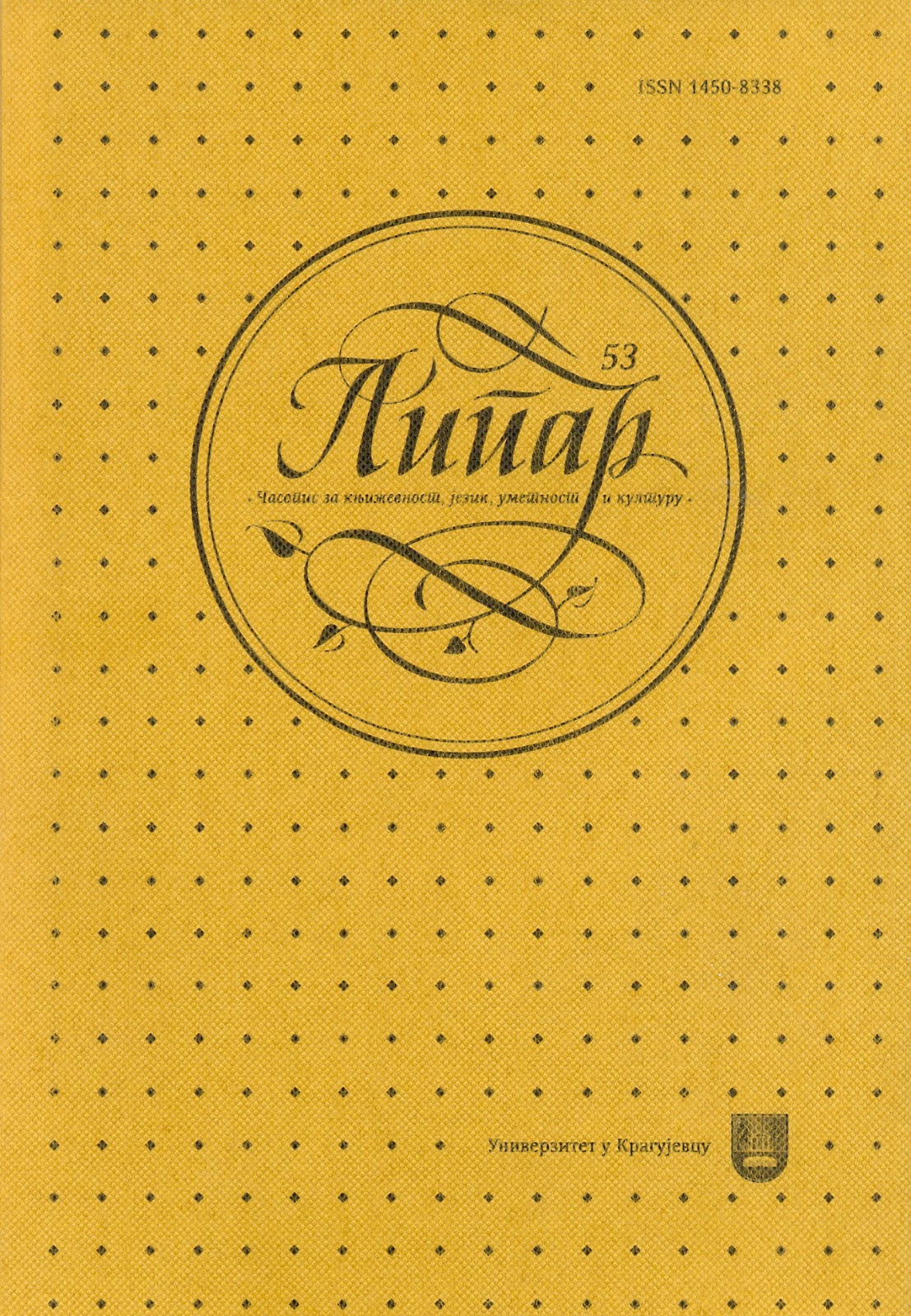ФРАГМЕНТАРНА НАРАТИВНА СТРУКТУРА
„ТРИЛОГИЈЕ СМРТИ“ РЕДИТЕЉА АЛЕХАНДРА
ГОНЗАЛЕСА ИЊАРИТУА
Fragmented narrative structure in Alejandro Gonzalez Inarritu’s „Death Trilogy“
Author(s): Sandra M. NikolićSubject(s): Fine Arts / Performing Arts, Film / Cinema / Cinematography
Published by: Универзитет у Крагујевцу
Keywords: fragmented structure; non-linear narrative; plot; story;cognitive theory;the viewer; cause-effect relationships; chronological order; duration; frequency;art-film
Summary/Abstract: This essay contains an analysis of structure and style of narrative film, with a special focus on the model of fragmented nonlinear structure in Inarritu’s „Death Trilogy“. Relying on the basic principles of cognitive theory, the treatise underlines the importance of spectator’s perceptive, cognitive and metal abilities. Viewing through a prism of David Bordwell’s analytic theory of narrative, the author defines the „Death Trilogy“ as a paradigm of a different film concept compared to the dominant Hollywood model of firm narrative structure. The basic premise of Bordwell’s theory is that narrative as the core element of the narrative film affects spectator’s understanding of the film. Spectator tends to formulate a set of hypotheses and reach conclusions based on the cause-and-effect relationships and chronological order of the plot. In a film system, the spectator can percieve general principles such as: function, similarity, repetition, difference, divergence, development, unity and disunity. Each element in a film has one or more functions and a specific set of similarities and differences, while repetition of certain elements contributes to understanding, organization and rhythm of the story, which is a precondition for the comprehension of the film. Apart from the narrative structure, the film also includes a structure which represents the forms of perception of the narrative i.e. the structure which shapes the outer world by expressive elements and fillm techniques. According to Bordwell, this structure is called stylistic system and is defined as a category of schematic use of techniques-mise-en-scene, cinematography, editing and sound in an effort to adress specific problems presented by the visual narration of the story. The structural and stylistic analyses of the movies: Amores Perros, 21 grams and Babel, have proved that the quality of presentation is primarly reflected in non-linear and fragmented structure i.e. deconstruction of chronological order, the cause-and-effect relationships and parallel presentation, which urges the spectator to constant search for meaning and often require close attention and seeing the film again in order to fully understand the film text and the author’s intention.
Journal: Липар - часопис за књижевност, језик, уметност и културу
- Issue Year: XV/2014
- Issue No: 53
- Page Range: 157-168
- Page Count: 12
- Language: Serbian

